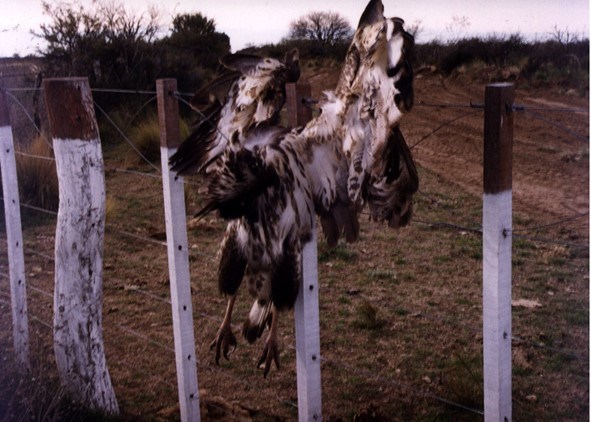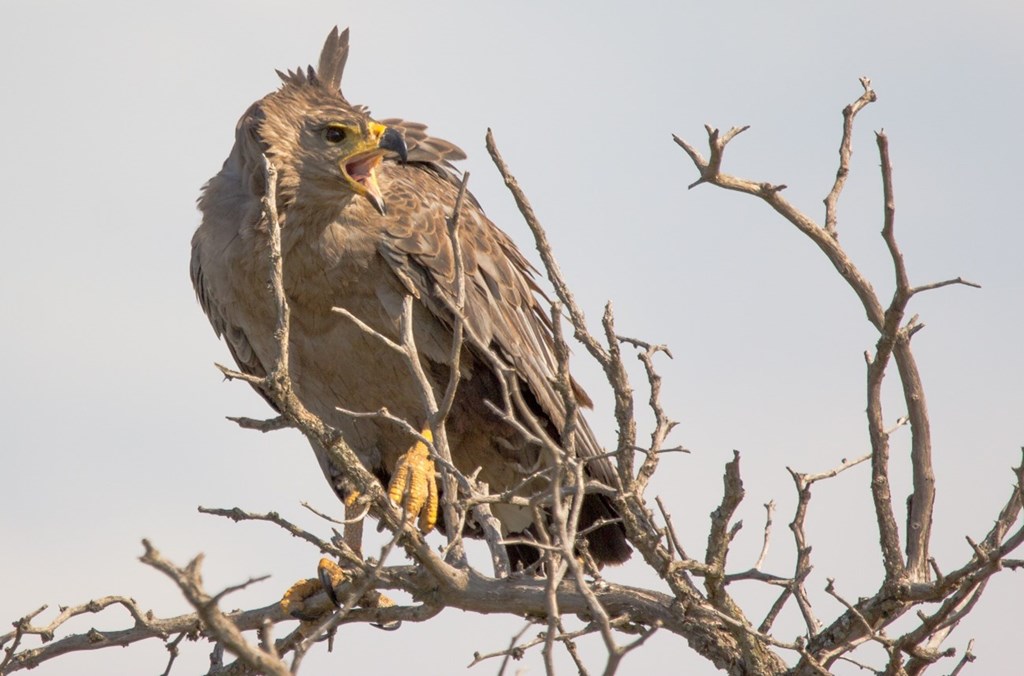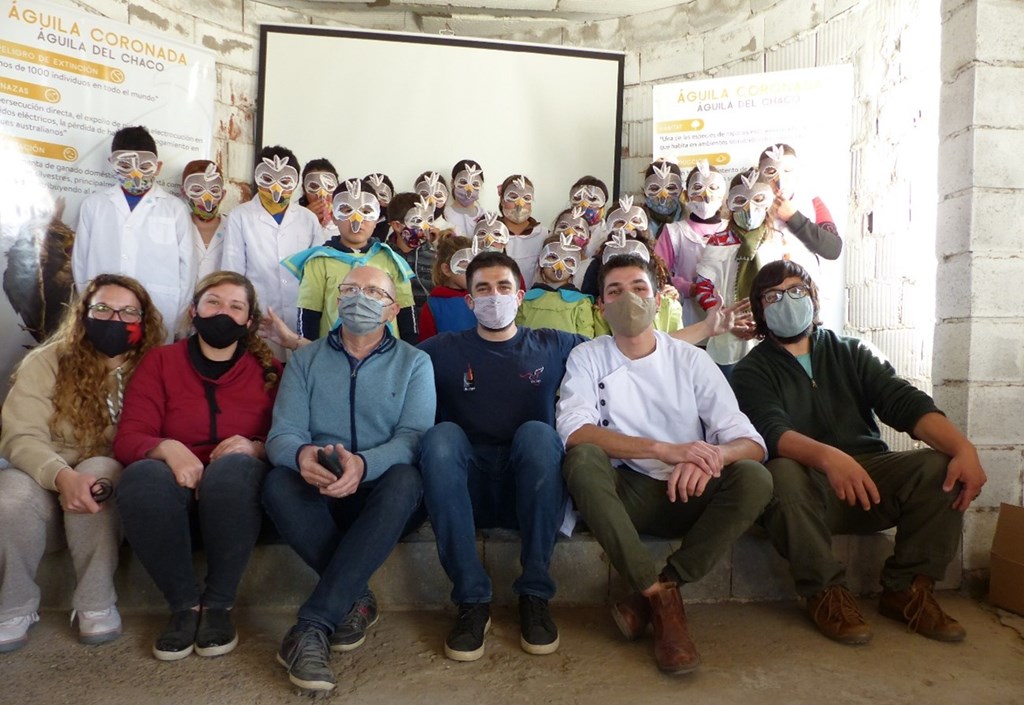The Mystery of the “Weeping Eagle”: An Endangered Raptor that Faces an Uncertain Future
Posted on in In the Field by Diego Gallego Garcia, 2022 Spring Conservation Science Trainee

Written by Diego Gallego García, Ph.D. student at the Center for the Study and Conservation of Birds of Prey in Argentina (CECARA) and Argentinian Scientific and Technical Research Council (CONICET).
Support this research: https://gofund.me/99625e98
It was a cold winter afternoon in central Argentina, June 2000. A dreadful encounter drew José Sarasola's attention: hanging on a wire fence of a private ranch was a dead juvenile eagle of an unknown species. The carcass had been left on purpose, probably warning other members of its species about their fate. Farmers in the area had the traditional belief that the “weeping eagle,” colloquially named due to the sound of its call, preyed on livestock. José immediately realized that there were only incidental observations and anecdotal records about this rare animal known as Chaco eagle. The mystery surrounding this species had consigned it to heart wrenching scenes like the one he had just observed, so he knew something needed to be done to change that.

What follows, is the result of more than 20 years of research, outreach, and conservation efforts for this species, changing the rhetoric from fear and lack of awareness to action. The Chaco eagle (Buteogallus coronatus) is one of the rarest, most elusive, and severely threatened birds of prey in the Neotropical region, and one of the largest in all southern South America. Adults have grey to ash-colored plumage with a dark grey tail, reach a wingspan of up to six feet, stand two and half feet tall and weigh nearly ten pounds. One of the field marks is its conspicuous crested head. The species inhabits savannah-like ecosystems, open woodlands and dry shrublands, from southern Brazil, Bolivia, and Paraguay to central Argentina. It takes five years for the species to mature to breeding age and it lays only one egg per nesting season. With a world population estimated at less than 1,000 reproductive individuals and declining trends, it is listed Endangered by the International Union for the Conservation of Nature (IUCN), and it is considered extinct in Uruguay since the 1930s.

The primary threats to Chaco eagle populations are mostly human-related. First, Chaco eagle original range of distribution has suffered a regression of almost 40% due to the transformation of native forests into croplands. Second, more than 100 incidents of illegal killing by locals have been reported across Argentina, most of them associated with the aforementioned conflict. Actually, the Chaco Eagle diet mainly consists of armadillos and reptiles such as tegus, pit vipers and coral snakes. Other important causes of mortality include electrocution in power lines and drowning in water reservoirs. All these threats added to their low productivity rate results in more than half of all nests failing.
Sadly, it is not easy for Chaco eagle populations to recover. Even worse, after leaving the protection of their parents only 30% of the juveniles survive. With all this in mind, models predict a probable extinction of Chaco eagles in the next 50 years. The disappearance of this apex predator could eventually result in an increase in the populations of its preferred prey species, such as venomous vipers and armadillos, along with unknown consequences to other wildlife and the ecosystems it inhabits on a broader scale.
Twenty years ago, little was known about Chaco eagles. Thanks to a few long-term studies, particularly in central Argentina, new scientific information about its ecology has emerged and provided some insight into threats affecting their populations. Milestones include a change in people´s perception towards Chaco eagle and a subsequent decrease in the illegal killing in La Pampa province.

At the beginning of every breeding season, in austral spring, we give talks at schools and hold interviews with local people in order to raise awareness on the protection of Chaco eagle. Afterwards, we explore vast areas of central and northern Argentina, visiting previous Chaco eagle territories and making the most of the data collected during the outreach campaign. Identified nests are monitored using camera traps, in order to better understand what happens in the nest. If we are lucky, we tag Chaco eagle fledglings with GPS-satellite transmitters at the end of the reproductive season. The locations obtained by these devices give us more insights about the habitat that Chaco eagles use, and the threats they face. After the reproductive season, we implement mitigation measures that reduce human-related Chaco eagle mortality at power lines and water reservoirs. This involved installing rescue ramps at water reservoirs and giving advice to energy companies on how to correctly retrofit power poles. Little by little, we are creating a network of enthusiasts committed with Chaco Eagle conservation, including landowners, ornithologists, land management technicians and other professionals of nature. However, time flies for "the weeping eagle," whose characteristic sobbing is becoming less and less common in the open woodlands of Argentina.

If you want to learn more about our project on the Chaco eagle, you can visit our Instagram account @proyectoaguilachaco or our Facebook account at CECARA-UNLPam, @cecaraunlpam. You can also email me directly with questions at [email protected] or visit the webpage of our research group at www.cecara.com.ar.
Learn more and support this research directly at https://gofund.me/99625e98!